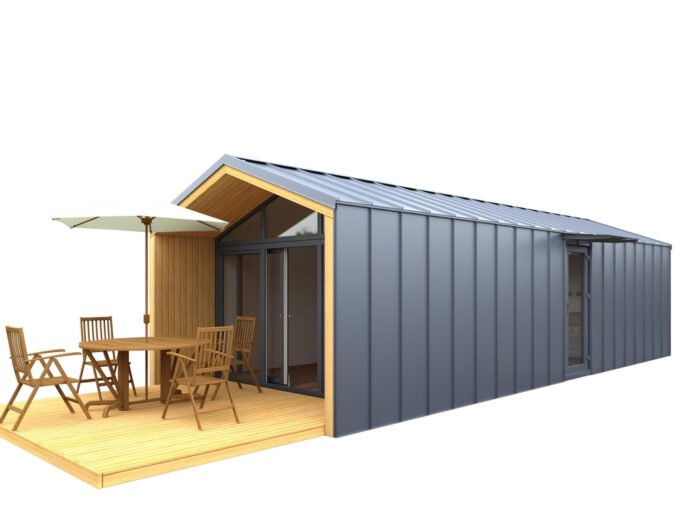Australia, in recent years, has seen a surge in the fascination for tiny homes. This trend is surprising and exhilarating, all at once. What indeed sparks this unconventional attraction for smaller spaces? Have Aussies found benefits we’ve overlooked so far, or are we plunging into the trend of glorifying discomfort cloaked under minimalism? Walk with us into the microscopic world of tiny homes and the reasons they are the homes of tomorrow.
Could it be the escalating real estate prices prompting a shift towards a more affordable lifestyle? Or perhaps an environmental consciousness is making people want to downsize, reduce their carbon footprint, and lead a sustainable life? Alternatively, is the minimalist lifestyle that such provides now considered the epitome of modern living? These are questions this article aims to answer. By analysing the trend, we’ll try to cover all the fine details of why tiny homes are big in Australia.
Buckle your seat belts, as we embark on an excitingly informative ride unveiling the hidden nuances of this macro trend in miniature spaces. Together, we will explore the why, what, when, who, and other pertinent questions surrounding the growing fascination with tiny homes in Australia.
Unsettling The Settlement: Why This Shift To Tiny Homes?
Let’s dive into why Australians are beginning to prefer smaller homes, squirreling away from the traditional idea of ‘bigger is better’. For many, it’s a matter of economics. Skyrocketing property prices are pushing people to reconsider their housing priorities. Minimal living doesn’t only signify smaller homes but also a reduced cost of living, which might just be the breath of fresh air homeowners need in a market segment marred by financial strain.
For others, it’s about consciously modelling a lifestyle that leaves a reduced carbon footprint. The recent bushfires and the continuous stress on environmental conservation encourage many Australians to actively participate in sustainable living. Small homes provide an easy route to adopting this lifestyle, requiring fewer resources to build, maintain, and live in.
On a different tangent, the appeal of a simplified, pared-down lifestyle is a significant pull for many. Minimising possessions can mean a lesser burden of upkeep and can grant homeowners peace of mind and the ever-elusive free time.
A Closer Look: What Comprises A Typical Tiny Home?
Tiny homes are micro abodes, often not more than 50 square meters, but filled with innovative design and features that optimise the space. The norm here is functionalism. Every nook, corner, ceiling, floor, and wall is used to its full potential, providing spaces for storage or additional utility.
Apart from functionality, small homes often capture attention with their modern, chic design aesthetics. Think IKEA meets Vogue – homes that offer sleek lines, natural daylight, bright interiors, and a touch of green. Tiny homes are indeed about living big in small spaces.
In terms of structure, a tiny home could be a miniature bungalow or a cabin, a compact apartment, or even a renovated vehicle. The canvas for such homes is truly vast and continues to expand as more and more people become engaged in this unique form of architecture and home building.
When Did Tiny Homes Begin Their Reign?
The trend of tiny homes may seem relatively new, but the roots of the movement trace back to the post-WWII era when people had to adapt to living in smaller buildings. However, the trend as we know it surfaced in the early 2000s in the USA, motivated by the financial crisis, and gradually seized global attention.
In Australia, the tiny home trend caught on closer to 2010, initially seen as a fringe interest among the growing population. However, it has now hit mainstream appeal, supported by various TV shows and media publications that glorify this living phenomenon.
The Wizards Of Oz: Who Is Joining The Australian Tiny Homes Movement?
Tiny homes are not just for solitary adventurers aiming to cut loose from societal norms. The demographic of people adopting the petite lifestyle varies widely, from young couples, singles, empty nesters looking to downsize, to individuals keen on reducing their environmental footprint.
Many small businesses have started focusing on building compact homes. This has led to a surge of innovative designers and builders throughout Australia who endeavour to create unique, high-quality, and affordable tiny homes.
Weighing The Scale: The Pros And Cons Of Tiny Homes
Like every coin, tiny homes have two sides. For all their charm and appeal, compact houses do come with their share of pitfalls. While they are cost-effective, environmentally friendly, and encourage a minimalistic lifestyle, the challenges they pose can’t be overlooked. Limited space can prove to be a challenge for families, and in many parts of Australia, zoning laws and building regulations are not conducive to the tiny house movement.
Despite some of the challenges, the benefits of tiny homes, for many, outweigh the setbacks. They’re an affordable means of owning property, they allow a freedom of lifestyle and location adopted by digital nomads, and they offer a simple and clutter-free living environment.
Architecting The Future: Final Thoughts
The rise of tiny homes in Australia is a manifestation of changing societal norms and values. A home is not just about size; it is about the quality of life that it offers. Tiny homes, with their smart design, economy, and sustainability, beautifully encapsulate this idea.
Whether it is an individual’s attempt to reduce their carbon footprint, the desire for a decluttered lifestyle, or the intent to live within one’s means, these distinctive, small structures embody many aspirations of the modern Australian citizen. While there may be valid concerns regarding space constraints and regulatory complexities, it will be interesting to watch how this trend continues to mould the traditional Australian housing landscape in the future.
Tiny homes, we cannot deny, are emerging as a big player in the Australian property market. This innovative approach to living represents freedom―financial, environmental, and the freedom to lead a meaningful life based on our authentic values. By embracing limitations, proponents of tiny homes are rewriting the status quo, urging us to reconsider our definitions of a ‘dream home’. After all, home truths can indeed come within small confines.








